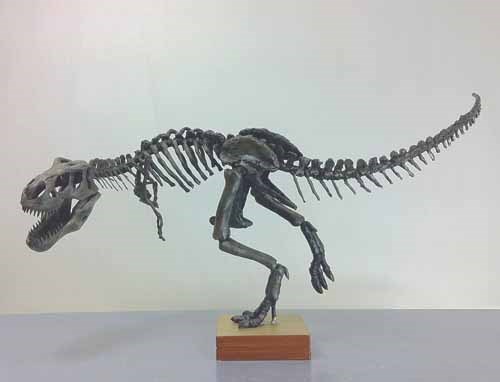Scotty the T. rex is temporarily leaving his home at the T.rex Discovery Centre in Eastend. His 65 million year old bones are being carefully packed at the Royal Saskatchewan Museum Fossil Research Station in Eastend and will be shipped to Ontario, where they will be individually molded and cast to create a complete mounted skeleton.
"This is a very exciting time for the Royal Saskatchewan Museum and the T.rex Centre," Tourism, Parks, Culture and Sport Minister Bill Hutchinson said. "To have a complete mounted skeleton of Scotty on display is the culmination of more than twenty years of hard work since Scotty was first discovered. The Royal Saskatchewan Museum has had a long partnership with the T.rex Centre and the Community of Eastend. To have Scotty on display will be an important tourism addition for the T.rex Centre and all of Saskatchewan."
"While temporarily losing Scotty's bones is going to leave a very large hole at the T.rex Centre, we are excited to finally be able to showcase Scotty in all his glory to our visitors," T.rex Discovery Centre General Manager Sean Bell said. "The artist's rendering of how Scotty will be returned to us is stunning. The display will allow people to truly appreciate what an amazing creature Scotty was and what an important find he was for Saskatchewan."
The first fossilized fragments of Scotty the T. rex were discovered in 1991 in the Frenchman River Valley near Eastend. It is the first T. rex skeleton found in Saskatchewan and one of the most complete in the world. Since then, Royal Saskatchewan Museum staff have painstakingly removed the surrounding rock from the bones, while at the same time, conducting a range of research projects, such as one that is currently underway with colleagues from the University of Regina that will help to better understand the environment Scotty was part of, using technologies like the Canadian Light Source (synchrotron).
Research Casting International from Trenton, Ontario won the contract to assemble Scotty through an open tender process. Two sets of replica bones are being cast from the original fossils. One will be returned to the T.rex Centre as a mounted skeleton in time for the busy tourist season of 2013. The skeleton will be approximately six metres tall and more than 12 metres long. A second set of replicated bones will be returned to the Royal Saskatchewan Museum, but not mounted, for use in a future exhibit.

.png;w=120;h=80;mode=crop)


